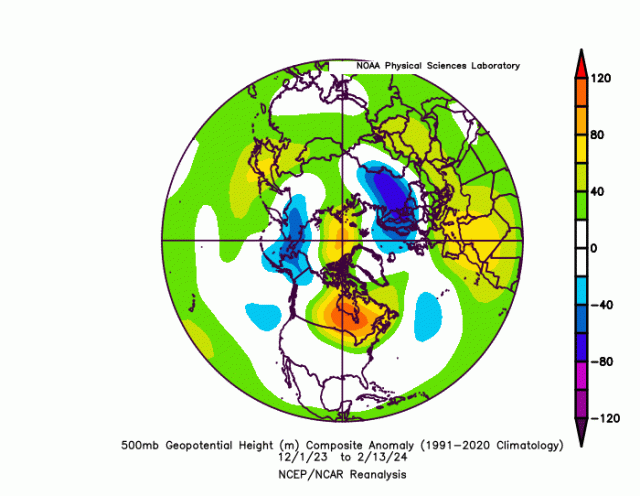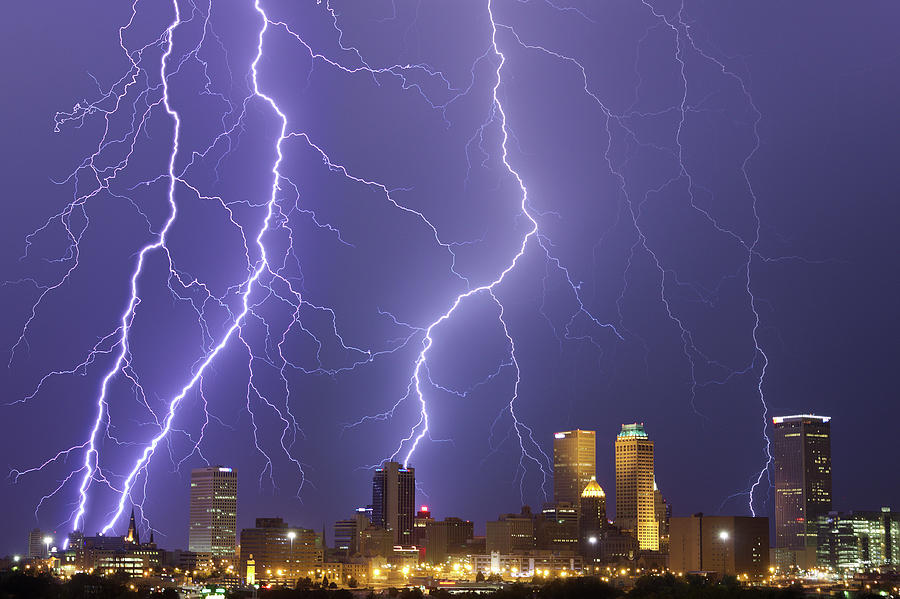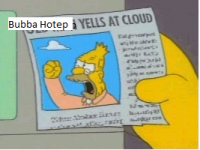https://x.com/toddyakoubian/status/1758260865671770511
Texas Winter 2023-2024
Moderator: S2k Moderators
Forum rules
 The posts in this forum are NOT official forecast and should not be used as such. They are just the opinion of the poster and may or may not be backed by sound meteorological data. They are NOT endorsed by any professional institution or STORM2K.
The posts in this forum are NOT official forecast and should not be used as such. They are just the opinion of the poster and may or may not be backed by sound meteorological data. They are NOT endorsed by any professional institution or STORM2K.
 The posts in this forum are NOT official forecast and should not be used as such. They are just the opinion of the poster and may or may not be backed by sound meteorological data. They are NOT endorsed by any professional institution or STORM2K.
The posts in this forum are NOT official forecast and should not be used as such. They are just the opinion of the poster and may or may not be backed by sound meteorological data. They are NOT endorsed by any professional institution or STORM2K.- Texas Snowman
- Storm2k Moderator

- Posts: 6181
- Joined: Fri Jan 25, 2008 11:29 am
- Location: Denison, Texas
Re: Texas Winter 2023-2024
1 likes
The above post and any post by Texas Snowman is NOT an official forecast and should not be used as such. It is just the opinion of the poster and may or may not be backed by sound meteorological data. It is NOT endorsed by any professional institution including storm2k.org. For official information, please refer to NWS products.
- Texas Snowman
- Storm2k Moderator

- Posts: 6181
- Joined: Fri Jan 25, 2008 11:29 am
- Location: Denison, Texas
Re: Texas Winter 2023-2024
The winter that wasn’t. It’s not just here.
https://x.com/weather_buffalo/status/1758142494120788459
https://x.com/weather_buffalo/status/1758142494120788459
1 likes
The above post and any post by Texas Snowman is NOT an official forecast and should not be used as such. It is just the opinion of the poster and may or may not be backed by sound meteorological data. It is NOT endorsed by any professional institution including storm2k.org. For official information, please refer to NWS products.
-
Lagreeneyes03
- Category 2

- Posts: 564
- Joined: Mon Dec 09, 2013 10:53 am
- Location: Luxurious Lake Grapevine
Re: Texas Winter 2023-2024
Texas Snowman wrote:Presented without commentary…
https://x.com/toddyakoubian/status/1758260865671770511
2 weeks ago, that was supposed to be next week. Now it's going to be in the 80's. Winter's Done.
2 likes
I'm a Princess, not a forecaster.
Re: Texas Winter 2023-2024
Lagreeneyes03 wrote:Texas Snowman wrote:Presented without commentary…
https://x.com/toddyakoubian/status/1758260865671770511
2 weeks ago, that was supposed to be next week. Now it's going to be in the 80's. Winter's Done.
I wouldn’t completely write it off yet. March can still get pretty cold sometimes. I remember it getting down to 19°F in March before all the way down where I live.
2 likes
-
orangeblood
- S2K Supporter

- Posts: 3714
- Joined: Tue Dec 15, 2009 6:14 pm
- Location: Fort Worth, TX
Re: Texas Winter 2023-2024
DukeMu wrote:orangeblood wrote:DukeMu wrote:The Nature article doesn't say that the geothermal contribution is increasing, it says that it establishes boundary conditions or constraints upon which presumably scientists could establish causal links: solar, CO2, methane, current oscillations, volcanos, even geothermal, etc. The article makes it clear that the boundary conditions in West vs. East Antarctica are different.
I'm not arguing whether geothermal is increasing or isn't in that particular region, just that it absolutely is a part of the climate equation. The debate is still by what magnitude ?
There are a slew of factors, including geothermal. We can parse them out better than decades ago as boundary conditions are becoming better known.
The continuous trend for CO2 is up. The analogies I use are like a thumb on the scale affecting outcomes and a probability model. While it's difficult to link specific weather events to the increased CO2 in the atmosphere, like adding millions of entries into a Lotto. It increases the probability of events While CO2 is only the 3rd most potent major greenhouse molecule (water vapor and methane are 1 and 2), CO2 is homogenously distributed in the troposphere (latitude, longitude, and altitude), it has a long half-life of (decades). Antarctica and Mauna Loa get the same values. Absorption of infrared radiation is an essential thermodynamic property. So the effects of upward trends are predictable in that the hum presses harder on the scale.
I measured CO2 in the atmosphere quite a bit back in the 80s for calibration of O2 and CO2 analyzers and it was 330 ppm (up from 280 ppm at the turn of the 20th Century. Today we're at 430 ppm and rising. Some of the temperature rise from 1980 - today was ironically reduction in particulate pollution (smog), some is UHI. A good bit of it is the rise in CO2 due to hydrocarbon burning and loss of tropical forestation.
While expected rise in night temperatures and largest changes at the poles are consistent with a modest greenhouse effects, predicting the future and the effect on specific areas and biosystems is difficult. The effects of CO2 are heterogenous and intertwined with complex ocean current oscillations. Models over-estimate the contribution of an expected rise in water vapor...by gaseous H2O is not homogenously distributed and has a very short half-life (days). However, the impact on the loss of albedo has been greater than affects.
I think we're looking at a 20-40 year transition to a carbon neutral environment. Carbon capture, potential development of fusion (now that we have superconductor magnets), hydrogen, ammonia, biofuels, planting more trees, greening the cities. I'm on the technology and innovation solution side.
Meanwhile, the probability of the # of Atlantic basin hurricanes will either not change or possibly decrease. However, the probability of CAT 4 and 5 bombs will continue to trend upwards. Most winter days will probably be warmer, with an occasional disrupted polar vortex.
My main concerns over the next 20-40 years are (slowly) rising sea level and potential for mega droughts scattered around the globe, taxing food supplies. These are things the Pentagon worries and plans potential scenarios where wars are ignited by limited food and resources in an increasingly unstable political climate.
The Earth will survive, regardless. Most of the Earth's existence was been without polar ice caps. That's a relatively "new" phenomenon, and the last 10M years have featured relatively unstable polar ice coverage.
Thank you for the thorough and well thought out hypothesis, I appreciate it! This is very important and valuable dialogue that needs to continue.
I obviously come from the other side of this debate, more so being that WAY TOO MUCH attention is on CO2. Yes, its 3rd on the list of greenhouse molecules in the atmosphere but it is extremely miniscule when compared to the other two (Water Vapor and Methane) and it's really not even close particularly when compared to Water Vapor. Water Vapor is the strongest greenhouse gas in our atmosphere, don't believe there's really much of a debate on that. My point in bringing up geothermal and it's little known contributions to the atmospheric cycle (mainly because it's not well monitored across our vast ocean sea floors) is that it contributes to the undebatable strongest Greenhouse Gas contributor, Water Vapor!!
The warming ocean, mainly away from the tropics, puts more water vapor into the air. That water vapor is the most prominent greenhouse gas and thus the temperature responds more so to that than anything else. The idea that its the air warming the ocean, and co2 is what is warming the air seems counter intuitive given the oceans have a 1000 times the heat capacity of the air. The colder the ocean, the more co2 and water vapor it holds vs the air. A warming ocean releases extra co2 into the air along with more water vapor. However the amount of extra water vapor is far far greater than the co2. So what would drive more warming.....water vapor. Where would that water vapor cause the greatest increase in temperature, given only small variations are needed to produce such things. The arctic, during their winter. This is easy to verify... just go to the DMI site and examine the temperatures to notice there has been no warming of the arctic in the summer, its all in the winter. https://ocean.dmi.dk/arctic/meant80n.uk.php
I'm bringing this up because there are perfectly logical arguments and examples, simple in nature, that demonstrate why the idea that ALMOST ALL of the temperature variation is natural and as a matter of fact intuitive when one understands the entire system and how big it is and how small co2 is. That is not to say co2 DOES NOTHING anything has some effect on everything else, but if its so small, it's likely not worth spending too much time arguing over and definitely not worth spending trillions upon trillions of $$$ on. Our main focus of the climate community needs to be on gaining a better understanding of our oceans, the biggest contributor to the strongest Greenhouse Gas contributor on our planet, WATER VAPOR!!
https://tropical.atmos.colostate.edu/Includes/Documents/Publications/gray2012.pdf
1 likes
- ElectricStorm
- Category 5

- Posts: 5109
- Age: 24
- Joined: Tue Aug 13, 2019 11:23 pm
- Location: Skiatook, OK / Norman, OK
Re: Texas Winter 2023-2024
Looks like we could be in for a pretty dull next couple weeks around here. Tomorrow will be cold but next week we'll be right back to above normal temps. Could even hit 75+ Tues/Wed which is crazy. Not really seeing any good chances of rain for a while either.
At least we're getting closer to storm season
At least we're getting closer to storm season
0 likes
B.S Meteorology, University of Oklahoma '25
Please refer to the NHC, NWS, or SPC for official information.
Please refer to the NHC, NWS, or SPC for official information.
Re: Texas Winter 2023-2024
Not only will it not be a cold February, likely ends up one of the warmest. +6.7F at DFW so far.
2 likes
The above post and any post by Ntxw is NOT an official forecast and should not be used as such. It is just the opinion of the poster and may or may not be backed by sound meteorological data. It is NOT endorsed by any professional institution including Storm2k. For official information, please refer to NWS products.
- Iceresistance
- Category 5

- Posts: 9352
- Age: 22
- Joined: Sat Oct 10, 2020 9:45 am
- Location: Tecumseh, OK/Norman, OK
Re: Texas Winter 2023-2024
Ntxw wrote:Not only will it not be a cold February, likely ends up one of the warmest. +6.7F at DFW so far.
January and February really switched spots
Normally, it was a warm January and cold February, does this mean that we get a cold March?
0 likes
Bill 2015 & Beta 2020
Winter 2020-2021
All observations are in Tecumseh, OK unless otherwise noted.
Winter posts are focused mainly for Oklahoma & Texas.
Take any of my forecasts with a grain of salt, refer to the NWS, SPC, and NHC for official information
Never say Never with weather! Because ANYTHING is possible!
Winter 2020-2021

All observations are in Tecumseh, OK unless otherwise noted.
Winter posts are focused mainly for Oklahoma & Texas.
Take any of my forecasts with a grain of salt, refer to the NWS, SPC, and NHC for official information
Never say Never with weather! Because ANYTHING is possible!
- bubba hotep
- S2K Supporter

- Posts: 5843
- Joined: Wed Dec 28, 2016 1:00 am
- Location: Collin County Texas
Re: Texas Winter 2023-2024
Ntxw wrote:Not only will it not be a cold February, likely ends up one of the warmest. +6.7F at DFW so far.
Which is crazy considering the long range tea leaves that we had back in January. However, basically everyone busted on that. I've seen several long range groups claim that while they did, in fact, claim Feb would turn colder, they didn't hype it as much as others lol
0 likes
Winter time post are almost exclusively focused on the DFW area.
-
orangeblood
- S2K Supporter

- Posts: 3714
- Joined: Tue Dec 15, 2009 6:14 pm
- Location: Fort Worth, TX
Re: Texas Winter 2023-2024
bubba hotep wrote:Ntxw wrote:Not only will it not be a cold February, likely ends up one of the warmest. +6.7F at DFW so far.
Which is crazy considering the long range tea leaves that we had back in January. However, basically everyone busted on that. I've seen several long range groups claim that while they did, in fact, claim Feb would turn colder, they didn't hype it as much as others lol
Really crazy, massive swing and miss across almost the entire pro met world!! Most were calling for 2-3 F below normal on high end, reality is potentially 7-8 F above!!

0 likes
-
Stratton23
- Category 5

- Posts: 2828
- Joined: Fri Jul 21, 2023 10:59 pm
- Location: Katy, Tx
Re: Texas Winter 2023-2024
And now march is looking likely cooler than average, noaas monthly outlook calls for it , dont think arctic cold but definitely a but on the chilly side, let the roller coaster commence
1 likes
- Texas Snowman
- Storm2k Moderator

- Posts: 6181
- Joined: Fri Jan 25, 2008 11:29 am
- Location: Denison, Texas
Re: Texas Winter 2023-2024
1 likes
The above post and any post by Texas Snowman is NOT an official forecast and should not be used as such. It is just the opinion of the poster and may or may not be backed by sound meteorological data. It is NOT endorsed by any professional institution including storm2k.org. For official information, please refer to NWS products.
-
Brent
- S2K Supporter

- Posts: 38213
- Age: 37
- Joined: Sun May 16, 2004 10:30 pm
- Location: Tulsa Oklahoma
- Contact:
Re: Texas Winter 2023-2024
I'm not really sure I believe it but everyone is saying winter isn't over here yet and March could still deliver I mean I know it has before but that doesn't mean anything with the way this winter is going
Regardless of that I'm flying to Denver tomorrow for a few days to chill out and maybe find some snow there who knows lol even there it's gonna be pushing 60 by Monday
Regardless of that I'm flying to Denver tomorrow for a few days to chill out and maybe find some snow there who knows lol even there it's gonna be pushing 60 by Monday
0 likes
#neversummer
-
Lagreeneyes03
- Category 2

- Posts: 564
- Joined: Mon Dec 09, 2013 10:53 am
- Location: Luxurious Lake Grapevine
Re: Texas Winter 2023-2024
Stratton23 wrote:And now march is looking likely cooler than average, noaas monthly outlook calls for it , dont think arctic cold but definitely a but on the chilly side, let the roller coaster commence
I don't buy it, on Feb 7 they were predicting below average for next week and flipped a few days later.
https://twitter.com/MattyVWeather/statu ... 26/photo/1
0 likes
I'm a Princess, not a forecaster.
-
Stratton23
- Category 5

- Posts: 2828
- Joined: Fri Jul 21, 2023 10:59 pm
- Location: Katy, Tx
-
Stratton23
- Category 5

- Posts: 2828
- Joined: Fri Jul 21, 2023 10:59 pm
- Location: Katy, Tx
Re: Texas Winter 2023-2024
End of the 12z Euro has cold air building in our source region, we will see
1 likes
-
Lagreeneyes03
- Category 2

- Posts: 564
- Joined: Mon Dec 09, 2013 10:53 am
- Location: Luxurious Lake Grapevine
Re: Texas Winter 2023-2024
Stratton23 wrote:End of the 12z Euro has cold air building in our source region, we will see
The CPC JUST (In the past 2 hours or so!) updated the long range week 3-4 from below normal to equal chances.
0 likes
I'm a Princess, not a forecaster.
-
Stratton23
- Category 5

- Posts: 2828
- Joined: Fri Jul 21, 2023 10:59 pm
- Location: Katy, Tx
Re: Texas Winter 2023-2024
Lagreeneyes03 read their discussion, a Major SSWE is likely going to begin sometime within the week which could and i emphasize could have an impact to the US in a few weeks, they also mention how their is a lot of contradiction in the models, and especially the MJO which i think is going to swing to phase 3 and then back to 1-2, very complicated pattern ahead, Im not saying goodbye for good until i see which part of the globe that SSWE is going to affect
1 likes
-
orangeblood
- S2K Supporter

- Posts: 3714
- Joined: Tue Dec 15, 2009 6:14 pm
- Location: Fort Worth, TX
Re: Texas Winter 2023-2024
Stratton23 wrote:Lagreeneyes03 read their discussion, a Major SSWE is likely going to begin sometime within the week which could and i emphasize could have an impact to the US in a few weeks, they also mention how their is a lot of contradiction in the models, and especially the MJO which i think is going to swing to phase 3 and then back to 1-2, very complicated pattern ahead, Im not saying goodbye for good until i see which part of the globe that SSWE is going to affect
Unfortunately, this pattern coming up looks really similar to the one that's been plaguing us all winter season....


1 likes
-
Stratton23
- Category 5

- Posts: 2828
- Joined: Fri Jul 21, 2023 10:59 pm
- Location: Katy, Tx
Re: Texas Winter 2023-2024
Orangeblood while the rest of february looks mild, after that i think we will see some changes, now im not
claiming we are going to see arctic air but the euro weeklies and CFS show our -NAO block returning as well as an alaskan ridges in weeks 3-4,
claiming we are going to see arctic air but the euro weeklies and CFS show our -NAO block returning as well as an alaskan ridges in weeks 3-4,
Last edited by Stratton23 on Fri Feb 16, 2024 4:22 pm, edited 1 time in total.
1 likes
Who is online
Users browsing this forum: No registered users and 297 guests





